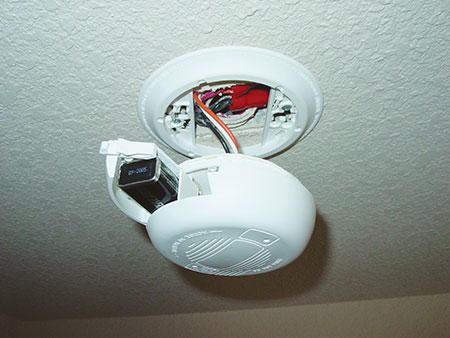You have to look to the document that has purview over fire alarm systems, and household smoke alarms, that being NFPA 72, National Fire Alarm and Signaling code. That very clearly points out the difference between fire alarm systems, and single and multi-station household alarms.
The requirements for the fire alarm power supply branch circuits required in 760.41 and 760.121 originate from Chapter 10 of NFPA 72.
Chapter 22 of that same document covers the interconnected dwelling unit says, in 29.1.3 that the requirements of Chapter 10 do not apply to these systems.
Roger that, it took multiple fire-code standards to figure this out.
Wanted to know if hard-wired smoke outlet shared with other loads was a defect that must be declared in Transfer on Disclosure Statement (TDS), required by most states, under the doctrine of "
Cavet Venditor" .
Different state's Association of Realtors may require details of
construction defects on Seller Property Questionnaire (SPQ), among other things. (ie) If asked CA.Civ.Code 1710.2(d) even requires sellers to disclose any deaths, haunting, or paranormal activity.
NFPA 72 first edition was in 1999, no reference to dedicated branch circuits for fire alarm systems until 2010 NFPA-72 10.5.5.1
While chapter 29 for dwellings prohibits disconnecting primary power on fire alarm circuits, except for OCP, sharing circuits with other loads is not prohibited. I see your 2013 NFPA-72 29.1.3 also clarifies dwellings can share other loads with hard-wired smokes, since Chapter 10 does not apply.
However, when this client's existing property was built in 1989, NFPA 72 did not exist. Uniform Building Code (UBC 1210) and (NEC 760) were among several adopted codes in my state.
Without any reference to "dedicated" circuit / "no other load" for fire-alarm power thru-out PDF copy of 1988 UBC or 1987 NEC at nfpa.org, my client's question seems answered, unless our fire marshal points out we failed to check the IBC, IRC, or some other adopted code.


